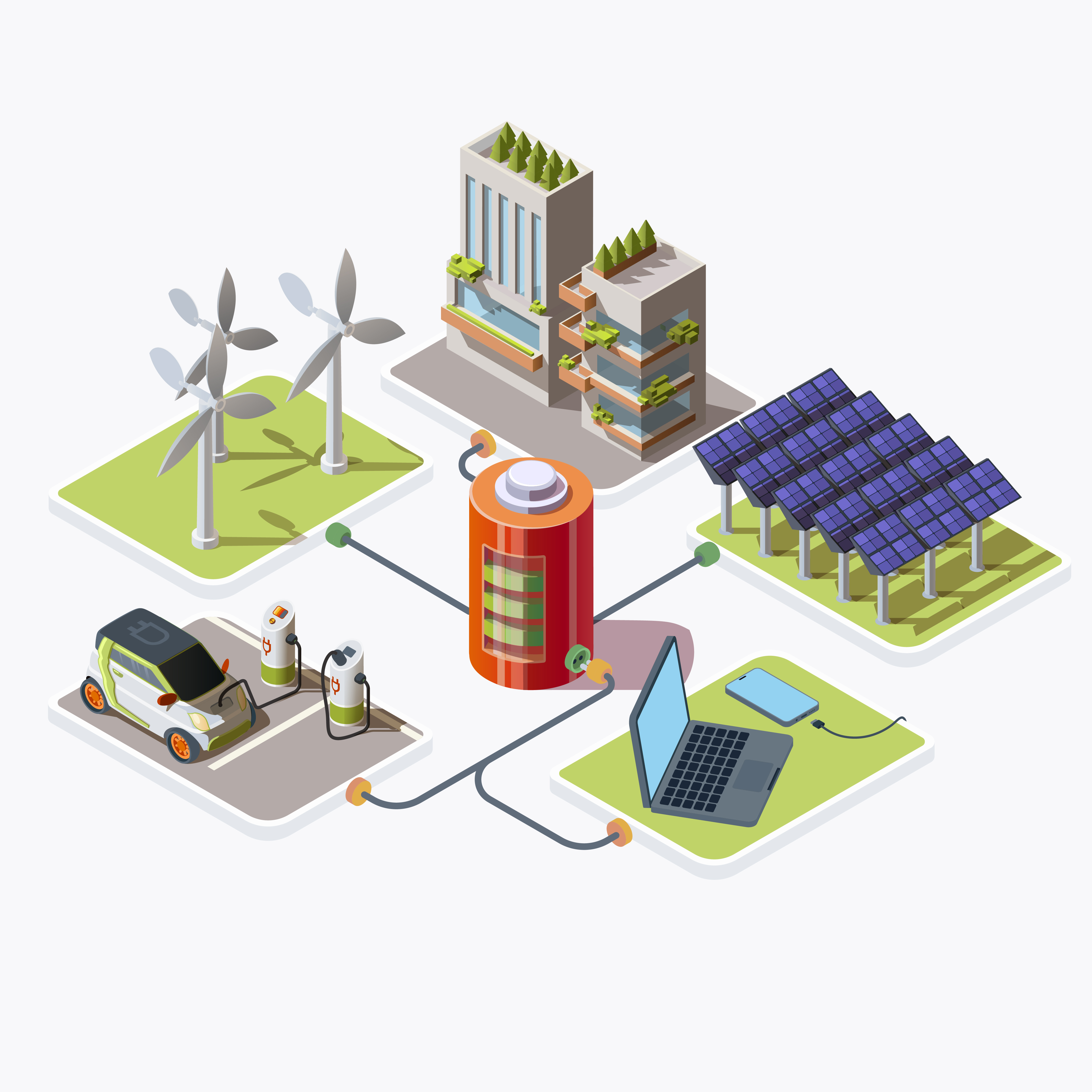Table of Contents
ToggleIntroduction
In the face of climate change and the pressing need to transition to sustainable energy sources, renewable energy investments have garnered significant attention. Among the prominent contenders in the renewable energy landscape are solar, wind, and hydro power. Each of these sources presents unique advantages and challenges, making it essential to compare them comprehensively to make informed investment decisions. Renewable energy has a rich history of development, with significant advancements in recent years. From early experiments with solar panels to the construction of massive wind farms and hydroelectric dams, the renewable energy sector has evolved rapidly. Today, renewable energy accounts for a growing share of global electricity generation, with solar, wind, and hydro playing pivotal roles.
Solar Energy
Solar energy boasts several advantages, including its abundance and low environmental impact. With sunlight being freely available in most regions, solar panels can harness this energy to generate electricity. Additionally, solar power production does not produce greenhouse gas emissions, making it environmentally friendly. However, solar energy also has its drawbacks. One major challenge is its intermittency, as solar power generation relies on daylight hours and weather conditions. Moreover, the initial investment costs for solar installations can be high, although they have been decreasing in recent years. Solar power is derived from the conversion of sunlight into electricity using
photovoltaic (PV) panels or concentrated solar power (CSP) systems. PV panels consist of silicon cells that absorb sunlight and convert it directly into electricity, while CSP systems use mirrors or lenses to concentrate sunlight onto a small area, generating heat that drives a steam turbine to produce electricity. Solar power offers several advantages:
Abundant Resource: The sun provides an abundant and inexhaustible source of energy, making solar power a reliable and sustainable option for electricity generation. Minimal Environmental Impact: Solar power generates electricity without emitting greenhouse gases or other pollutants, making it environmentally friendly and reducing the carbon footprint of energy production.
Scalability: Solar power systems can be easily scaled up or down to meet varying energy demands, from small residential installations to large utility-scale solar farms.Modularity: Solar panels can be installed on rooftops, vacant land, or integrated into buildings, providing flexibility in deployment and reducing land-use conflicts. Despite these advantages, solar power also has some limitations: Intermittency: Solar power generation is dependent on sunlight, making it intermittent and variable, with energy output fluctuating throughout the day and seasonally. Land and Space Requirements: Large-scale solar farms require significant land area, leading to land-use conflicts in densely populated regions and concerns about habitat disruption and environmental impact.
Wind Energy
Wind energy is another prominent renewable energy source, with widespread availability and mature technology. Wind turbines can be deployed both onshore and offshore, harnessing the power of the wind to generate electricity. This scalability makes wind energy a flexible and versatile option for renewable power generation. Despite its advantages, wind energy is not without challenges. Visual and noise impacts are often cited as concerns, particularly in densely populated areas. Additionally, large-scale wind farms require significant land use, which can lead to conflicts with other land uses such as agriculture or conservation. Wind power harnesses the kinetic energy of wind to drive turbines and generate electricity. Wind turbines consist of blades mounted on a rotor connected to a generator, which converts mechanical energy into electrical energy. Wind power offers several advantages:
Abundant Resource: Wind energy is abundant and widely distributed, with vast potential for electricity generation in both onshore and offshore locations. Low Environmental Impact: Wind power produces electricity without emitting greenhouse gases or other pollutants, making it a clean and sustainable alternative to fossil fuels. Cost-Competitiveness: Advances in wind turbine technology and economies of scale have led to significant reductions in the cost of wind power, making it increasingly competitive with conventional energy sources.
Rapid Deployment: Wind power projects can be deployed relatively quickly compared to other forms of energy infrastructure, helping to meet growing energy demand and reduce reliance on fossil fuels. However, wind power also faces certain challenges: Intermittency: Like solar power, wind power is intermittent and variable, with energy output depending on wind speed and direction, leading to fluctuations in electricity generation. Visual and Noise Impacts: Wind turbines can have visual and noise impacts on local communities, leading to concerns about aesthetics, property values, and potential health effects. Site Limitations: Wind power requires suitable wind resources, limiting its deployment to specific geographic locations with sufficient wind speeds and minimal turbulence.
Hydro Energy
Hydroelectric power offers reliable and consistent power generation, making it a valuable renewable energy source. Hydroelectric facilities can provide baseload power, complementing intermittent sources like solar and wind. Moreover, the lifespan of hydroelectric infrastructure can span several decades, ensuring long-term energy security. However, hydroelectric power generation also poses environmental challenges. The construction of dams can disrupt natural habitats and alter river ecosystems, affecting wildlife and aquatic species. Additionally, suitable sites for hydroelectric dams are limited, constraining the potential for further expansion. Hydro power harnesses the energy of flowing water, such as rivers, streams, and oceans, to generate electricity. Hydroelectric power plants use turbines to convert the kinetic energy of moving water into mechanical energy, which is then converted into electricity by generators. Hydro power offers several advantages:
Reliable and Dispatchable: Hydro power plants can provide reliable and dispatchable electricity supply, as water flow can be controlled to meet demand fluctuations and integrate with other renewable energy sources. Longevity and Durability: Hydro power plants have long lifespans and low maintenance requirements, providing a stable and dependable source of electricity over many decades. Energy Storage: Some hydro power plants can serve as energy storage facilities by pumping water uphill during periods of low demand and releasing it to generate electricity during peak demand, enhancing grid stability and flexibility. However, hydro power also has some limitations:
Environmental Impact: Large-scale hydro power projects can have significant environmental impacts, including habitat destruction, alteration of river ecosystems, and displacement of communities. Limited Growth Potential: The development of new hydro power projects is constrained by available water resources and environmental regulations, limiting the growth potential of hydro power compared to other renewable energy sources.Vulnerability to Climate Change: Hydro power generation is dependent on water availability, making it vulnerable to changes in precipitation patterns, snowmelt, and other hydrological factors associated with climate change.
Cost Analysis
When comparing renewable energy investments, cost is a crucial factor to consider. The initial investment costs, as well as ongoing operational expenses, vary among solar, wind, and hydro projects. Solar installations typically require significant upfront investment in photovoltaic panels and associated infrastructure. Wind farms entail expenses for turbine construction and maintenance, while hydroelectric projects involve costs for dam construction and reservoir management. The efficiency and output of renewable energy sources also play a vital role in investment decisions. Solar, wind, and hydro projects differ in their energy output and capacity factors, influenced by factors such as weather conditions and geographical location. Understanding these factors is essential for accurately assessing the potential returns on investment for each technology.
Environmental considerations are paramount in evaluating renewable energy investments. While solar and wind energy have relatively low environmental footprints compared to fossil fuels, they are not entirely without impact. The production and disposal of solar panels and wind turbines involve energy and resource consumption, as well as potential pollution. Similarly, hydroelectric power generation can have significant environmental consequences, including habitat disruption and altered water flow regimes. The renewable energy market is dynamic, with shifting trends and growth patterns. Solar, wind, and hydro power have all seen significant growth in recent years, driven by factors such as declining costs, supportive government policies, and increasing awareness of climate change. Understanding market dynamics is essential for identifying investment opportunities and navigating regulatory landscapes. Government incentives and regulations play a crucial role in shaping renewable energy investments. In many countries, solar, wind, and hydro projects benefit from various subsidies, tax credits, and feed-in tariffs designed to promote renewable energy deployment. However, regulatory frameworks can also pose challenges, requiring developers to navigate permitting processes, environmental assessments, and grid interconnection requirements.
Technological Advancements
Advancements in technology continue to drive innovation in the renewable energy sector. Solar photovoltaic panels are becoming more efficient and affordable, while wind turbines are increasing in size and output capacity. Likewise, improvements in hydroelectric turbine design and operation are enhancing the efficiency and reliability of hydro power generation. Staying abreast of these technological developments is crucial for maximizing investment opportunities and staying competitive in the renewable energy market. The suitability of renewable energy sources varies depending on geographical factors such as sunlight exposure, wind resources, and available water bodies. Solar energy is most abundant in regions with high levels of solar insolation, such as deserts and tropical areas. Wind energy is most viable in areas with consistent wind patterns, such as coastal regions and plains. Hydroelectric power requires access to rivers or water bodies with sufficient flow and elevation differences. Understanding these geographical considerations is essential for identifying optimal locations for renewable energy projects. Investing in renewable energy entails various risks, ranging from technological and financial risks to regulatory and environmental risks. Understanding and mitigating these risks is essential for ensuring the success and viability of renewable energy projects. Factors such as weather variability, equipment reliability, and market volatility can all impact the performance and profitability of solar, wind, and hydro investments.
Investment Opportunities
Despite the challenges and risks, renewable energy investments offer promising opportunities for financial returns and environmental impact. Solar, wind, and hydro projects can provide attractive returns on investment, particularly as costs continue to decline and technology improves. Moreover, renewable energy investments contribute to job creation, economic development, and energy security, making them increasingly attractive to investors and policymakers alike. Assessing the financial returns of renewable energy investments requires careful consideration of factors such as capital costs, operating expenses, and revenue streams. Solar, wind, and hydro projects differ in their cost structures and revenue-generating potential, making it essential to conduct thorough financial analysis and due diligence. Factors such as government incentives, electricity prices, and project financing options can all impact the financial viability of renewable energy investments. Examining real-world examples of successful renewable energy projects can provide valuable insights into the opportunities and challenges of solar, wind, and hydro investments. Case studies from various regions and project scales illustrate best practices, lessons learned, and factors influencing project outcomes. By analyzing these case studies, investors can gain valuable knowledge and inform their investment strategies in the renewable energy sector.
Public Perception and Acceptance
Public perception and acceptance play a significant role in the success of renewable energy projects. While solar, wind, and hydro power offer numerous environmental and economic benefits, they can also face opposition from local communities and stakeholders. Understanding and addressing public concerns regarding issues such as visual impact, noise pollution, and property values is essential for securing public support and mitigating project risks. Corporate entities play a crucial role in driving renewable energy investments through their financing, development, and operation of solar, wind, and hydro projects. Energy companies, financial institutions, and other stakeholders are increasingly integrating renewable energy into their investment portfolios and business strategies. By aligning corporate investment strategies with sustainability goals and market trends, companies can capitalize on the growing demand for clean energy and contribute to a more sustainable future.
Integration with Existing Infrastructure
Integrating renewable energy sources into existing energy infrastructure presents both challenges and opportunities. Solar, wind, and hydro projects must be seamlessly integrated into the grid to ensure reliable and efficient power delivery. Energy storage technologies such as batteries and pumped hydro storage can enhance the flexibility and resilience of renewable energy systems, enabling greater integration and stability. Reducing dependence on fossil fuels and enhancing energy security are key objectives of renewable energy investments. Solar, wind, and hydro power offer domestic and decentralized energy sources that are less vulnerable to geopolitical risks and supply disruptions. By diversifying energy sources and promoting local energy production, renewable energy investments contribute to greater energy independence and resilience. In addition to environmental benefits, renewable energy investments generate significant social and economic benefits. Solar, wind, and hydro projects create jobs, stimulate economic growth, and support local communities through tax revenues and community development initiatives. Moreover, renewable energy deployment can reduce energy poverty, improve public health, and enhance energy access in underserved regions, contributing to broader social and economic development goals.
Future Outlook
The future of renewable energy investments is bright, with continued growth and innovation expected in the years ahead. Solar, wind, and hydro power are poised to play increasingly prominent roles in the global energy transition, driven by factors such as technological advancements, policy support, and market demand. As the cost of renewable energy continues to decline and the urgency of addressing climate change intensifies, the momentum behind renewable energy investments is expected to accelerate, creating new opportunities for investors, businesses, and communities worldwide.







